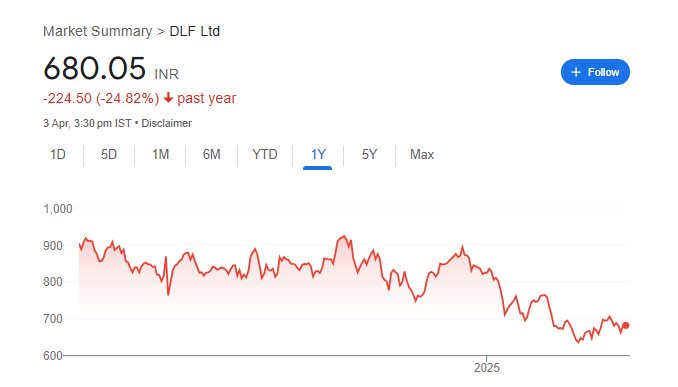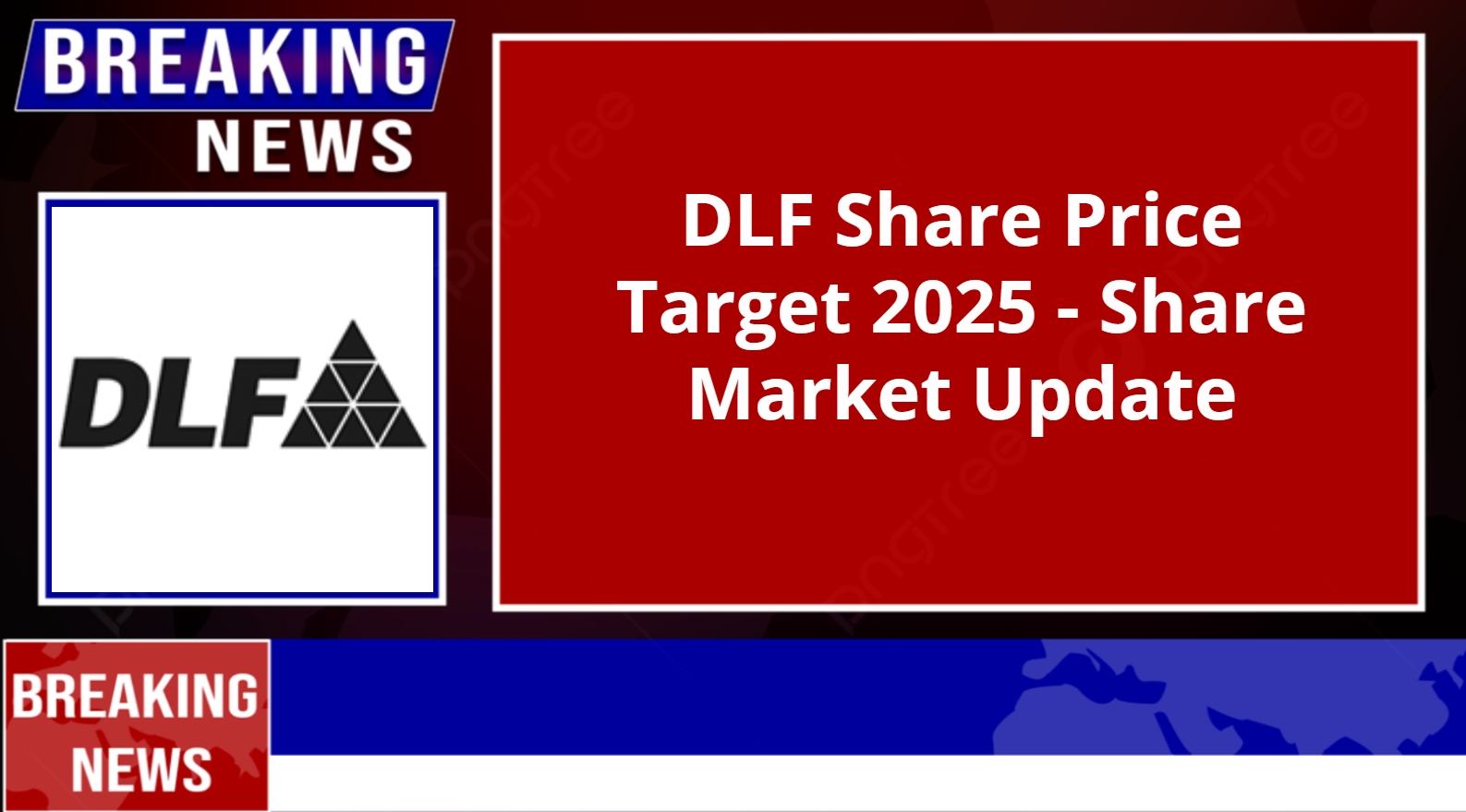DLF Share Price Target 2025 – Share Market Update
DLF is one of India’s leading real estate companies, known for its residential, commercial, and retail projects. The company benefits from growing urbanization, strong property demand, and rental income from its leased spaces. Supportive government policies and low interest rates can further boost its growth. DLF Share Price on NSE as of 3 April 2025 is 680.05 INR.
Current Market Overview Of DLF Share
- Open: 677.05
- High: 691.70
- Low: 675.55
- Mkt cap: 1.68LCr
- P/E ratio: 42.01
- Div yield: 0.74%
- 52-wk high: 934.00
- 52-wk low: 622.00
DLF Share Price Chart

Shareholding Pattern For DLF
- Promoter: 74.08%
- FII: 16.37%
- DII: 4.87%
- Public: 4.69%
DLF Share Price Target Tomorrow
| DLF Share Price Target Years | DLF Share Price Target Months | DLF Share Price |
| DLF Share Price Target 2025 | April | ₹710 |
| DLF Share Price Target 2025 | May | ₹740 |
| DLF Share Price Target 2025 | June | ₹770 |
| DLF Share Price Target 2025 | July | ₹800 |
| DLF Share Price Target 2025 | August | ₹830 |
| DLF Share Price Target 2025 | September | ₹860 |
| DLF Share Price Target 2025 | October | ₹890 |
| DLF Share Price Target 2025 | November | ₹910 |
| DLF Share Price Target 2025 | December | ₹940 |
Key Factors Affecting DLF Share Price Growth
-
Real Estate Market Demand
DLF is one of India’s largest real estate developers, and its share price depends on demand for residential and commercial properties. A strong housing market, rising incomes, and urbanization can boost sales and drive stock growth. -
Government Policies & Regulations
Policies related to real estate, such as interest rates on home loans, GST, and RERA regulations, directly impact DLF’s business. Supportive policies encourage property buying and benefit the company’s share price. -
Economic Growth & Interest Rates
A growing economy leads to higher demand for real estate, while lower interest rates make home and office purchases more affordable. If the economy is strong and borrowing costs are low, DLF can see better sales and stock performance. -
Project Execution & Sales Performance
Timely completion of projects and strong pre-sales numbers increase investor confidence. If DLF efficiently delivers high-quality projects and maintains steady sales, its share price can rise. Delays or project failures, however, can hurt investor sentiment. -
Rental & Leasing Income Growth
DLF earns a significant part of its revenue from leasing commercial spaces. Higher rental income from offices, malls, and IT parks boosts the company’s financial stability and supports share price growth. -
Competition & Market Position
DLF competes with companies like Godrej Properties, Oberoi Realty, and Prestige Estates. Maintaining a strong brand, launching premium projects, and offering competitive pricing help DLF stay ahead and support its share price growth.
Risks and Challenges for DLF Share Price
-
Slowdown in the Real Estate Market
If demand for residential or commercial properties falls due to economic slowdowns, high property prices, or weak buyer sentiment, DLF’s sales and revenue may decline, impacting its share price. -
High Debt & Interest Rate Changes
Real estate companies often rely on loans for project development. If interest rates rise, borrowing becomes expensive, increasing financial pressure on DLF and reducing its profitability. -
Regulatory & Policy Risks
Government policies like changes in real estate laws, tax regulations, or stricter RERA (Real Estate Regulatory Authority) rules can affect DLF’s operations and profitability, influencing stock performance. -
Project Delays & Rising Construction Costs
Delays in project completion due to land approvals, legal issues, or labor shortages can affect cash flow and investor confidence. Additionally, rising material and labor costs can lower profit margins. -
Competition from Other Developers
DLF competes with major players like Godrej Properties, Oberoi Realty, and Prestige Estates. If competitors launch better or more affordable projects, DLF may struggle to maintain market share, affecting growth. -
Dependence on Rental & Leasing Business
A significant part of DLF’s revenue comes from leasing commercial spaces. If businesses reduce office spaces due to remote work trends or economic issues, rental income may decline, impacting overall earnings and share price.

